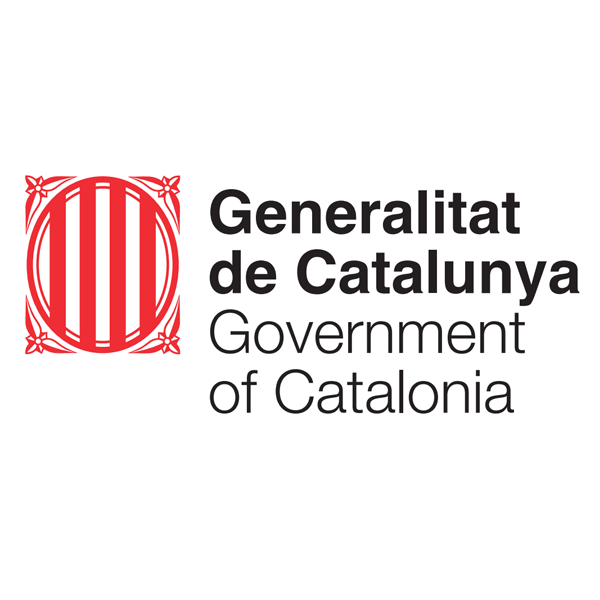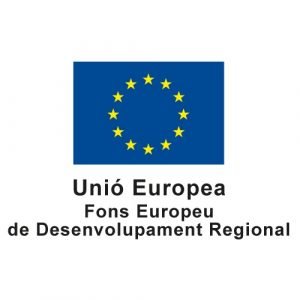Descripció
Amb el Departmament de Polítiques Digitals de la Generalitat de Catalunya, participem en la coordinació de l’Estratègia Blockchain de Catalunya per dur a terme un programa d’actuacions que fomenti el desenvolupament de l’ecosistema Blockchain i DLT al país.
En el marc de l’Estratègia Blockchain de Catalunya, el Departament de Polítiques Digitals ha posat en marxa l’Observatori Blockchain amb la col·laboració de la Fundació i2CAT per promoure i avaluar l’ús i desenvolupament DLT al territori, identificant, catalogant i analitzant les tendències del seu desplegament. Es pretén generar un espai per compartir conclusions, anàlisis i bones pràctiques. L’Observatori ha iniciat el mapatge dels agents que configuren l’ecosistema de tecnologies Blockchain i DLT a Catalunya per identificar iniciatives i incentivar sinergies entre elles.
Informe sobre la governança i els algorismes de consens
La Fundació i2CAT col·labora en l’elaboració de l’informe sobre conceptes disruptius i transformadors de la tecnologia Blockchain, plantejant diferents visions i models de governança, l’impacte de la descentralització i els algorismes de consens, o la privacitat i seguretat a la Blockchain. En l’informe es tracten les característiques que fan eficaç la tecnologia Blockchain i defineix els models de governança i la seva implementació. També es fa referència a la capacitat que té la xarxa Blockchain per abordar l’escalabilitat, la descentralització i la seguretat sense comprometre cap d’aquestes característiques. També s’aprofundeix en com aquestes tres característiques afecten en el procés d’adopció d’una xarxa Blockchain.
La descentralització és una de les principals característiques de la tecnologia Blockchain: se suprimeix la figura d’autoritat central i se supleix amb xarxes descentralitzades que utilitzen mecanismes de consens que garanteixen el compliment de les regles definides mitjançant la utilització dels mecanismes dels algorismes de consens, sobre els quals hi ha una explicació sobre què són i com funcionen. S’aprofundeix en els algorismes per conèixer el seu grau de descentralització tractant-los des d’una visió descentralitzadora, comparant-los segons el rol dels participants, nivell de seguretat i eficiència de l’algorisme. Al final de l’informe s’aborda com garantir privacitat i anonimat, complint el reglament general de protecció de dades (GDPR) i introduint les garanties de privacitat gràcies a la implementació de proves de coneixement zero (ZKP).
L’informe sobre els algorismes de consens es pot llegir aquí.
Informe sobre l’escalabilitat a la blockchain
Amb l’augment de la utilització de les xarxes Blockchain, el problema de l’escalabilitat és un dels reptes més importants a tenir presents. La Fundació i2CAT col·labora en l’informe que planteja els reptes d’escalabilitat que afronta la tecnologia Blockchain i quins són els diferents plantejaments o solucions en els que s’està treballant per donar-hi solució.
Garantir escalabilitat en una xarxa Blockchain implica assegurar la seva capacitat de funcionament i processament de transaccions, garantint que la seguretat i descentralització de les xarxes no es vegin afectades. Trobar l’equilibri entre escalabilitat, seguretat i descentralització ha portat a la comunitat de les diverses xarxes Blockchain a proposar diferents solucions.
En aquest informe s’introdueixen conceptes que permeten comprendre i analitzar l’impacte de l’increment de peticions de processaments de transaccions, quines són les problemàtiques que cal resoldre per millorar l’escalabilitat de les xarxes blockchain públiques i quins són els factors que determinen el rendiment i la velocitat de processament de les transaccions. L’objectiu d’aquest informe és conèixer quins són els reptes, propostes i solucions desenvolupades per la comunitat tecnològica.
Pots llegir l’informe aquí.
Informe sobre la identitat digital
A mesura que l’ús de les aplicacions web s’ha incrementat, i el seu ús ha esdevingut massiu a través de nous serveis, aplicacions web i mòbils, les persones s’han vist obligades a realitzar registres amb les seves dades personals per obtenir una identitat digital que els hi permetés autenticar-se i accedir a cadascun d’aquests serveis. Aquest procés massiu de registres genera un conjunt incontrolable d’identitats o perfils digitals que l’usuari no pot controlar, i aquest és un dels problemes principals: l’usuari no té el control ni el coneixement del nombre d’identitats digitals que posseeix ni pot controlar l’ús que se’n fa de les seves dades.
Amb l’aparició de la tecnologia blockchain s’ofereix una resposta a les necessitats actuals de la identitat digital, ja que permet resoldre aquests problemes.
Pots llegir l’informe aquí.
Impacte estimat
En aquesta línia i amb la voluntat d’incrementar el valor d’aquestes tecnologies, l’Observatori publica casos d’ús reals on les tecnologies Blockchain i DLT generen noves solucions i/o oportunitats. La publicació dels casos d’ús permet difondre i demostrar el seu potencial tecnològic en àmbits diversos. Els casos d’èxit publicats fins ara es poden veure aquí.
El programa d’actuacions de l’estratègia s’estructura al voltant de sis eixos:
1. Administració: millorar els serveis públics mitjançant l’adopció de les tecnologies blockchain i DLT i apostar per la Generalitat de Catalunya com a pionera en la seva aplicació.
2. Promoció: posicionar Catalunya com a país de referència en blockchain i DLT dins del mapa tecnològic internacional i difondre les oportunitats i l’impacte que genera el seu desplegament.
3. Innovació: impulsar la recerca i la innovació mitjançant els centres de recerca i tecnològics, i desenvolupar entorns d’innovació per a la seva adopció en els diferents sectors.
4. Ecosistema: potenciar una nova indústria al voltant de la tecnologia blockchain i DLT i dinamitzar la demanda de serveis i solucions associats a sectors verticals prioritaris.
5. Talent: generar, retenir i atraure talent, tant tecnològic com emprenedor, amb els coneixements i les capacitats necessàries per al desenvolupament d’aquesta nova indústria.
6. Regulació: analitzar les implicacions que té la regulació sobre el desplegament d’aquesta tecnologia i també com es regulen les aplicacions que en fan ús.


